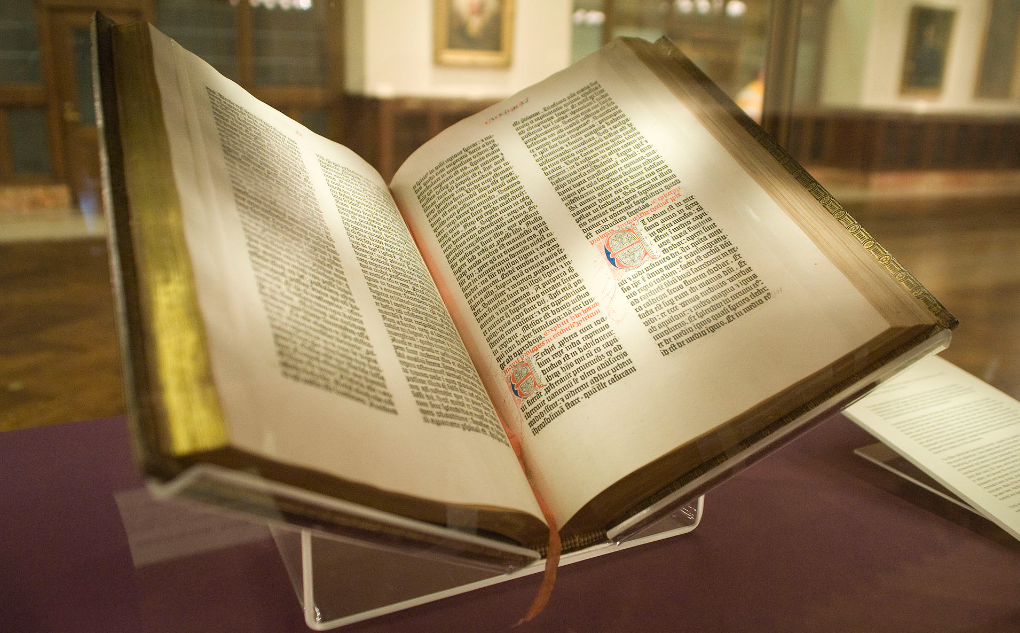The Torah and Bible are both ancient texts that hold religious significance for millions of people around the world. While both are central to the Abrahamic faiths of Judaism and Christianity, respectively, their differences are often overlooked or misunderstood. Well, read to learn key differences between these two scriptures, including their contents.
What is Torah?

The Torah is the compilation of the first five books of the Hebrew Bible, namely the books of Genesis, Exodus, Leviticus, Numbers and Deuteronomy. The Torah is known as the Pentateuch or the Five Books of Moses by Christians. It is also known as the Written Torah in Rabbinical Jewish tradition.
The word “Torah” itself can be translated variously as “law,” “instruction,” or “teaching,” reflecting its role as a comprehensive guide to Jewish religious and moral life. It contains narratives of creation, the patriarchs and matriarchs, the exodus from Egypt, and the giving of the Ten Commandments at Mount Sinai, among other stories. Additionally, the Torah includes legal codes, ethical teachings, and ritual instructions that govern aspects of daily life, communal worship, and religious observance for Jews.
Traditionally, Jews believe that the Torah was revealed by God to Moses on Mount Sinai and that Moses transcribed it, making him the central figure in its authorship. However, modern scholarship suggests that the Torah is a compilation of multiple sources and likely has multiple authors and editors, dating from different periods in ancient Israelite history.
What is Bible?

The Bible is a collection of religious texts or scriptures, some, all, or a variant of which, are held to be sacred in Christianity, Judaism, Samaritanism, Islam, the Baha’i Faith, and many other Abrahamic religions.
The Bible is an anthology, a compilation of texts of a variety of forms, originally written in Hebrew, Aramaic, Aramaic, and Koine Greek. These texts include instructions, stories, poetry, and prophecies, and other genres.
The collection of materials that are accepted as part of the Bible by a particular religious tradition or community is called a biblical canon. Believers in the Bible generally consider it to be a product of divine inspiration, but the way they understand what that means and interpret the text varies.
The first Bible printed was the Gutenberg Bible which was printed using movable type. It has been translated into different languages over time, with over 5 billion copies sold. What is referred to as the Bible is divided into two main variants: the Old Testament and the New Testament.
Old Testament (Tanakh): Comprises books written in Hebrew (with some portions in Aramaic) and is organized into several sections, including:
- The Torah (Pentateuch): The first five books, attributed traditionally to Moses.
- Historical Books: Accounts of Israel’s history, including the conquest of Canaan, the establishment of the monarchy, and exile and return.
- Wisdom Literature: Poetic and philosophical writings, such as Psalms, Proverbs, and Ecclesiastes.
- Prophets (Major and Minor): Divided into major prophets like Isaiah and Jeremiah, and minor prophets like Amos and Hosea.
New Testament: Focuses on the life, teachings, death, and resurrection of Jesus Christ, as well as the early Christian community. It consists of the following sections:
- The Gospels: Four accounts of the life of Jesus written by Matthew, Mark, Luke, and John.
- Acts of the Apostles: A historical account of the early Christian church and the missionary activities of the apostles.
- Epistles (Letters): Letters written by early Christian leaders like Paul, Peter, John, and others, addressing theological issues, moral guidance, and practical matters within the Christian community.
- Revelation: A highly symbolic apocalyptic text attributed to John, which describes visions of the end times and the ultimate victory of God over evil.
Torah vs Bible: Key Differences
Scope and Content
- The Torah specifically refers to the first five books of the Hebrew Bible: Genesis, Exodus, Leviticus, Numbers, and Deuteronomy. It contains the foundational teachings and laws of Judaism.
- The Bible, on the other hand, is a much broader term that encompasses multiple religious texts, including the Old Testament (which includes the Torah) and the New Testament (which contains Christian scriptures).
Religious Significance
- The Torah is considered the holiest scripture in the Jewish faith. It serves as the foundation of Jewish law (Halakha) and theology.
- In Christianity, the Old Testament, including the Torah, is revered as sacred scripture, but it is supplemented by the New Testament, which focuses on the life, teachings, death, and resurrection of Jesus Christ.
Authorship
- Traditional Jewish belief attributes the authorship of the Torah to Moses, with the exception of the account of his death, which is thought to have been added by another writer. However, modern scholarship suggests that the Torah is a compilation of multiple sources and likely has multiple authors.
- The Bible has numerous authors spanning different time periods and cultural contexts. For instance, the Old Testament authors include prophets, historians, and poets, while the New Testament authors consist primarily of apostles and disciples of Jesus.
Language
- The Torah was originally written in Hebrew, with a small portion in Aramaic.
- The Bible was written in several languages, including Hebrew, Aramaic, and Greek. The Old Testament was primarily written in Hebrew, while parts of the New Testament were written in Greek.
Interpretation
- Jewish interpretation of the Torah is governed by a rich tradition of rabbinic commentary, including the Talmud, Midrash, and various other exegetical works.
- Christian interpretation of the Torah varies widely across denominations and theological perspectives, with some adherents emphasizing its historical and moral teachings, while others view it primarily through the lens of Christological interpretation.
Liturgical Use
- The Torah is read aloud in Jewish synagogues as part of regular worship services. Portions of the Torah are also read during Jewish holidays and festivals.
- In Christian worship services, readings from both the Old and New Testaments are common, but the emphasis is often placed on passages from the New Testament, particularly the Gospels.
Canonical Status
- Within Judaism, the Torah holds an authoritative position as the core scripture, while other books of the Hebrew Bible (such as the Prophets and the Writings) are also considered sacred but hold a different level of significance.
- The Bible, for Christians, includes both the Old Testament (which overlaps with the Jewish Bible) and the New Testament, with different Christian denominations recognizing different sets of additional texts as canonical.
Historical Context
- The Torah is deeply rooted in the history and culture of ancient Israel, providing insights into the origins of Judaism and the early history of the Israelites.
- The Bible encompasses a broader historical and cultural context, spanning from the ancient Near East to the early Christian era, reflecting diverse historical, social, and theological developments.
Torah and Bible: Key Takeaways
| Basis | Bible | Torah |
| Description | Collection of sacred texts in Christianity. | Central religious text of Judaism. |
| Language | Originally written in Hebrew and Greek | Originally written in Hebrew |
| Contents | Includes Old Testament and New Testament | Consists of the first five books of the Bible (Genesis, Exodus, Leviticus, Numbers, Deuteronomy) |
| Importance | Deeply rooted in the history and culture of ancient Israel, providing insights into the origins of Judaism and early Israelite history. | Spans broader historical and cultural contexts from ancient Near East to early Christian era, reflecting diverse historical, social, and theological developments. |
| Interpretation | Varied interpretations across Christian denominations, with emphasis on historical, moral, and Christological perspectives. | Interpreted through rabbinic tradition commentary and exegetical works among Jewish communities. |
| Religious Laws | Contains teachings and laws applicable to Christians. | Contains detailed laws and regulations for Jewish religious and communal life. |
| Liturgical Use | Readings from both Old and New Testaments are common in Christian worship services. | Read aloud in Jewish synagogues as part of regular worship services and during holidays/festivals. |